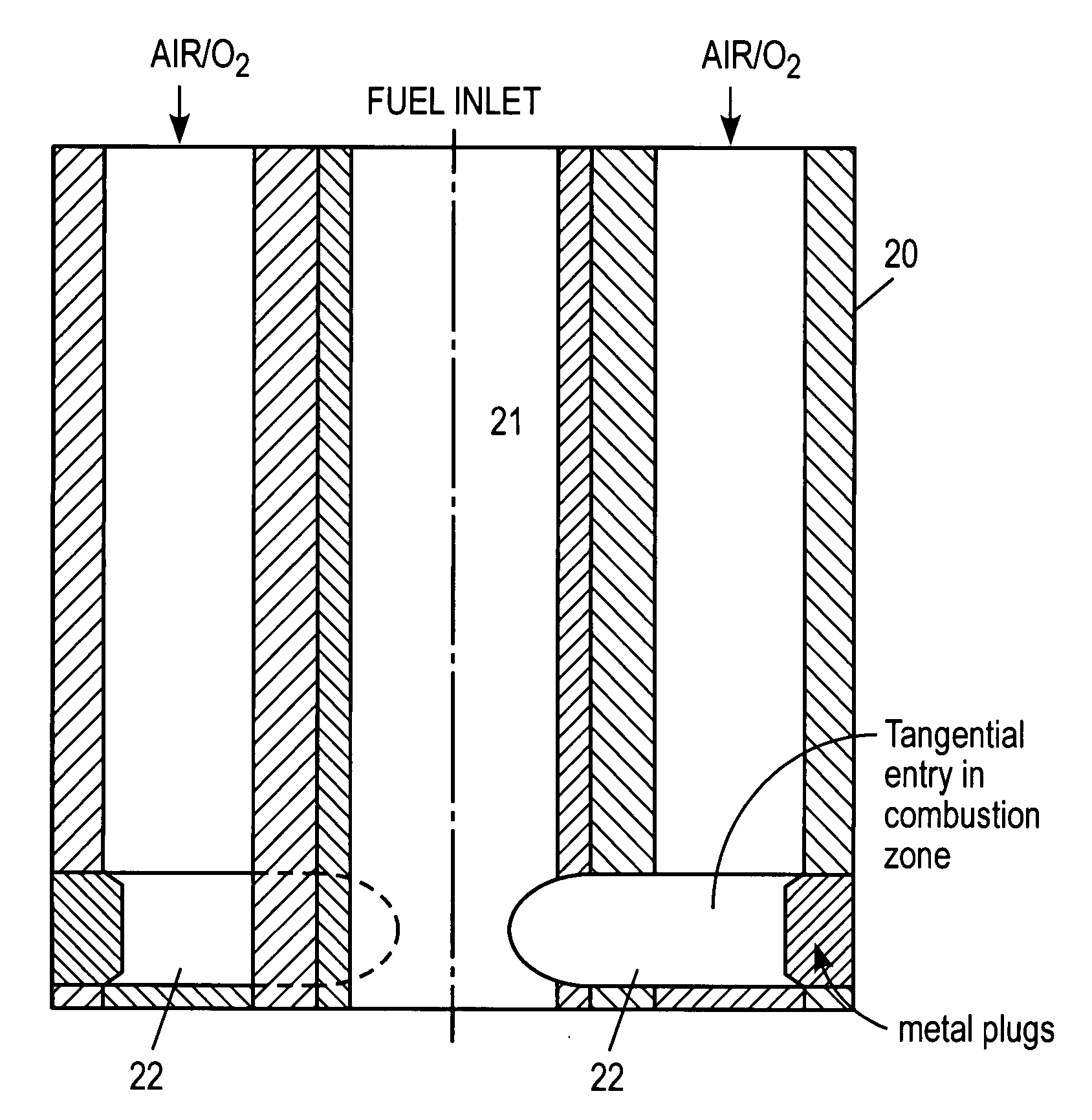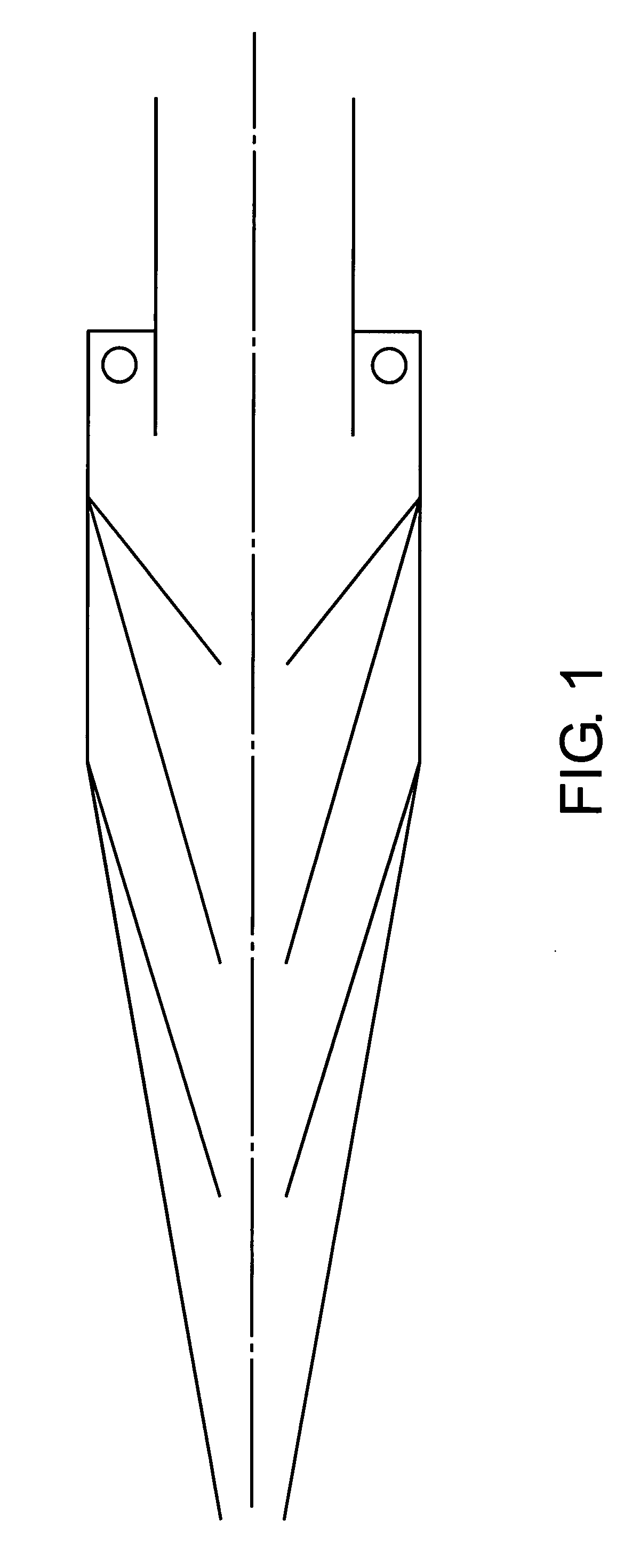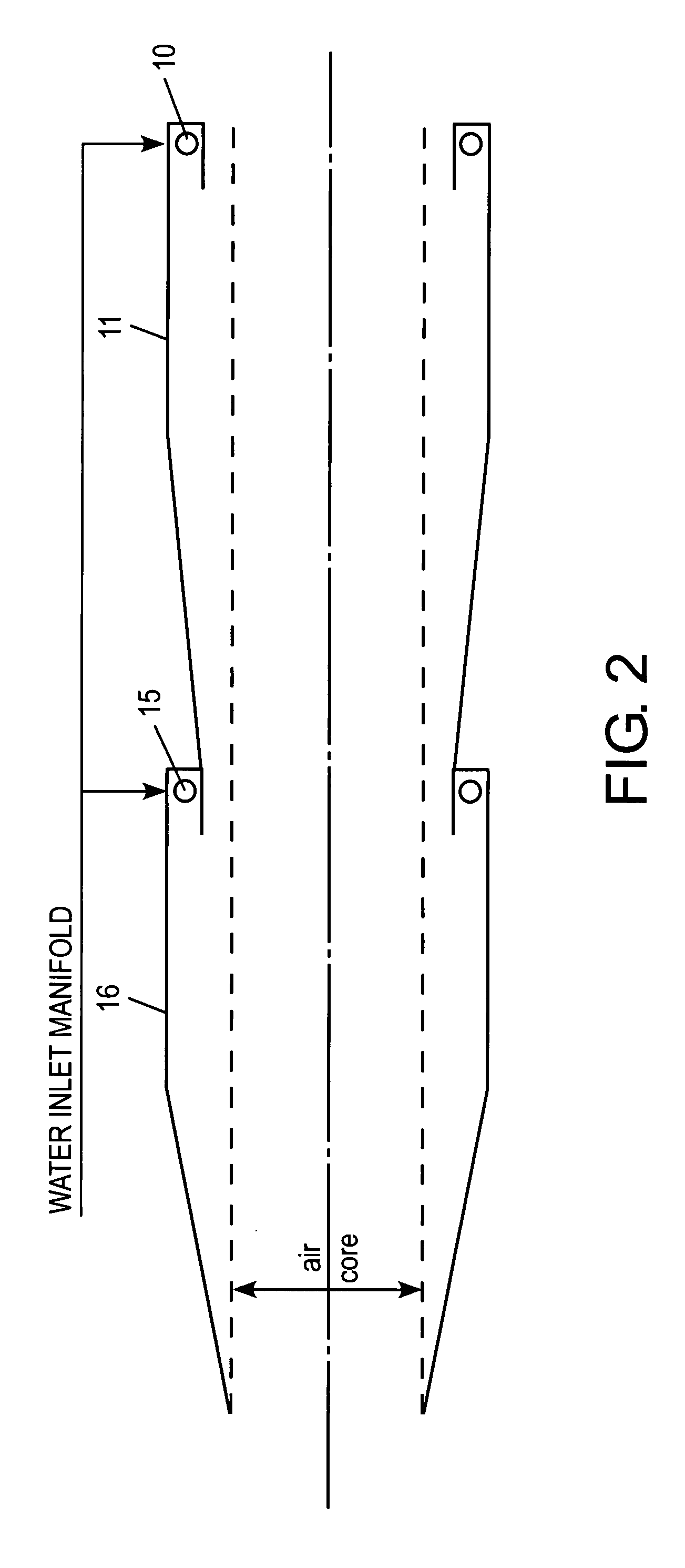Direct combustion steam generator
a direct combustion and steam generator technology, applied in the direction of combustion types, lighting and heating apparatus, borehole/well accessories, etc., can solve the problems of affecting the operation of the heater, the heating of the heater, and the annular metallic sleeves are particularly susceptible to severe thermal stress, and achieve high firing intensities and stabilize the flame
- Summary
- Abstract
- Description
- Claims
- Application Information
AI Technical Summary
Benefits of technology
Problems solved by technology
Method used
Image
Examples
Embodiment Construction
[0028] The concept and the detailed development of the heat transfer process for heating water, i.e., direct heating of the water with a premix linear flow burner flame, are provided in U.S. Pat. No. 4,604,988, which is hereby incorporated herein in its entirety. The design presented therein is sufficient for heating large quantities of water very quickly. However, the method as described is not of sufficient effectiveness and efficiency for generating steam from water.
[0029] The additional requirements of steam / CO2 generation using the direct heating process are:
[0030] (1) The burner should be capable of supplying the latent heat of vaporization corresponding to the pressure of operation by burning sufficient fuel (in air or oxygen) in a manner that assures the aerodynamic stability of the high-intensity flame.
[0031] (2) The hydrocyclone should be capable of flowing an amount of water that is larger than the amount of steam generated (to account for varying steam quality needs) ...
PUM
 Login to View More
Login to View More Abstract
Description
Claims
Application Information
 Login to View More
Login to View More - R&D
- Intellectual Property
- Life Sciences
- Materials
- Tech Scout
- Unparalleled Data Quality
- Higher Quality Content
- 60% Fewer Hallucinations
Browse by: Latest US Patents, China's latest patents, Technical Efficacy Thesaurus, Application Domain, Technology Topic, Popular Technical Reports.
© 2025 PatSnap. All rights reserved.Legal|Privacy policy|Modern Slavery Act Transparency Statement|Sitemap|About US| Contact US: help@patsnap.com



